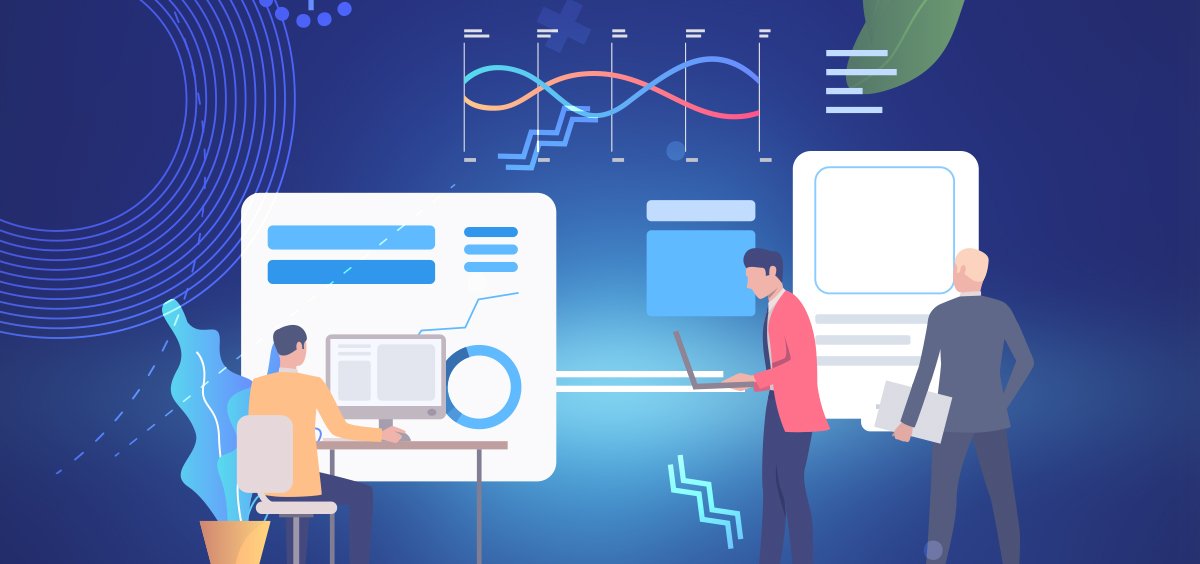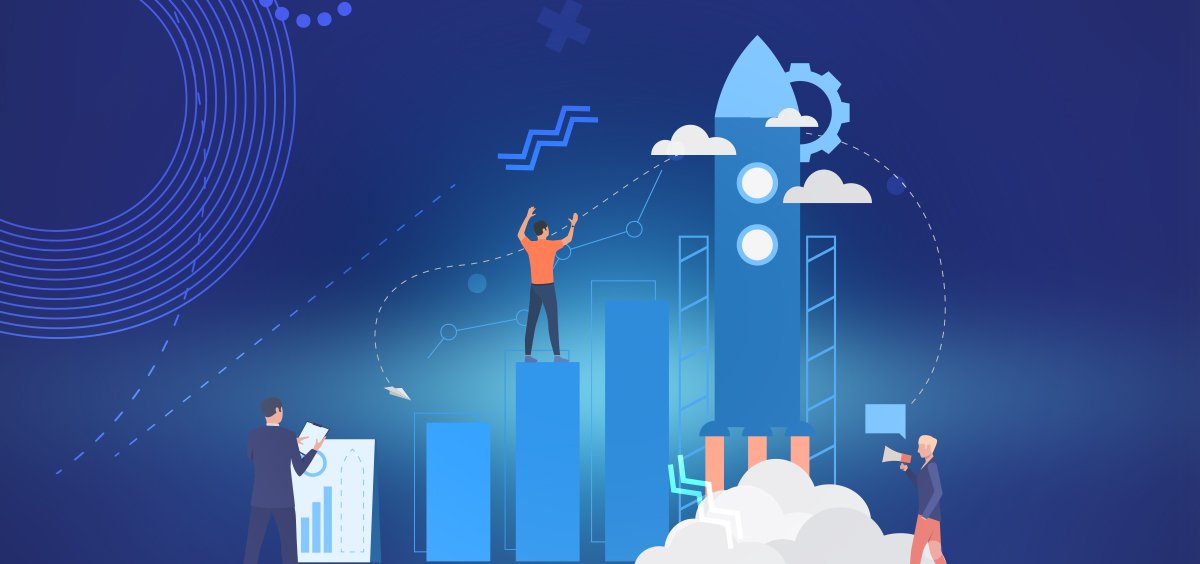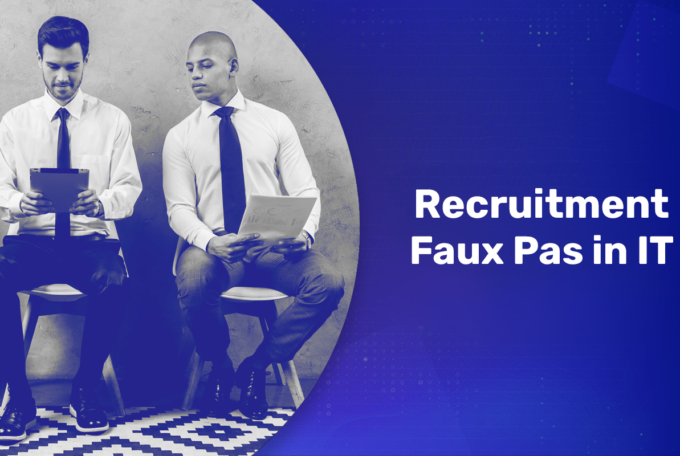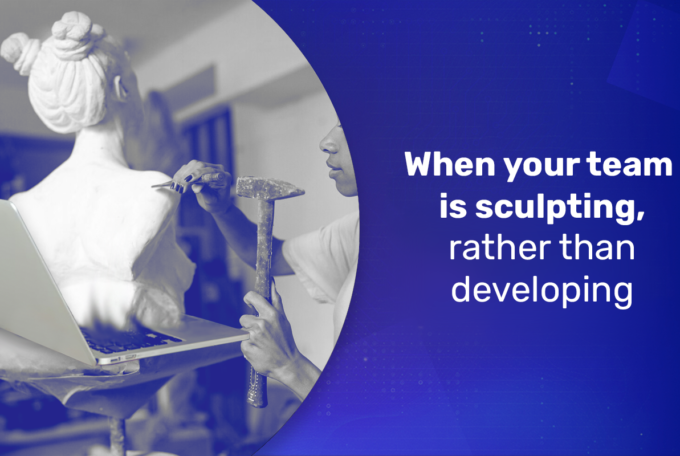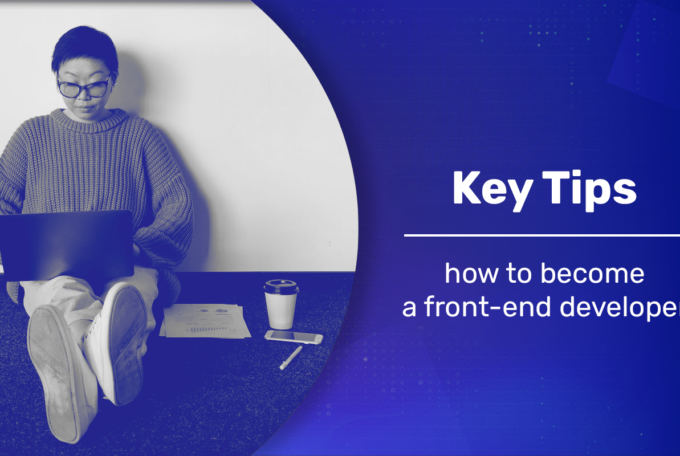Do you have an idea for a profitable business and need the right software, but you don’t know how to start? Or maybe you already have a great product, but you could use new technology to expand it on a global scale? Find out what the cooperation with a software house looks like on the example of Stepwise. Check what you can gain from audit, PoC and MVP.
Regardless of the stage you are at, the software development process should be based on similar principles. At Stepwise, we have been building our design know-how for years in order to provide not only the best digital products but also the highest quality of services. Find out how we do it.
From this article you will learn:
- How modern software development looks like?
- What to pay attention to when working with a software house?
- What IT services to choose at the start?
- What is technical debt?
- What is PoC and MVP?
- How long can the first stages of the software development process take?
- What can you expect from a reliable software house?
How to start cooperating with a software house?
Modern software development should be based on the current theoretical and practical knowledge of IT specialists, reliable cooperation of the parties, transparency of all actions and of course comprehensive market analysis. A good software house is not an ordinary programming company, but a versatile unit that knows business and creates digital products meeting today’s clients’ requirements.
Before you select your partner, pay attention to what the chosen company represents. What technological solutions the offer includes, how much project experience they have and what former and current customers say about them. A reliable software house proudly shares such information, so you can easily find it.
As an experienced software house with an established position on the market, we decided that Stepwise would make it easier for potential clients to choose a company when outsourcing IT services. We focus on full transparency at the stage of your search and provide as much information as possible on the website, profile on the Clutch platform and in social media channels.
Stepwise cooperates with many companies at different levels of their product development. The main factors that affect which services you should start with are your current business needs and the time to market. The three main approaches that work great in software development (and in which we feel exceptionally well) are audit, Proof of Concept (PoC) and Minimum Viable Product (MVP).
Read more about outsourcing IT services here.
Stepwise audit
Thorough analysis and consulting of your business idea
Stepwise analysis and consulting will come in handy if you already have a product or at least some part of the system and want to develop it further. One of the services that helps verify the business potential of an application or system is the Stepwise audit. It allows you to spot any shortcomings related to the technical debt of your project.
What is technical debt? If your product (or part of it) was developed in a rush, due to limited resources of time, money or specialists, technical problems may arise over time. The reason for this may be shortcomings in working in such conditions and technological limitations. Sometimes the client is unaware of the spectrum of this occurrence in their software until reading the Stepwise audit report. Read more about technical debt here.
Technical debt arises when, instead of quality, a priority is placed on the quick preparation of a digital product. This approach does not allow for the natural development of the project, the use of refined technologies and solutions and the detection of possible errors.
Sometimes, of course, technical debt is conscious and results from the current business needs. For example, when a product needs to be introduced quickly to the market in order to be ahead of the competition. A simple product, using light technologies, can be quickly implemented, but it has its limitations. At the time of scaling the project, it is necessary to conduct an audit to accurately verify what and to what extent needs improvement.
Stepwise solves such problems with the help of the most experienced IT specialists. Depending on the real needs and complexity of the system, we use Software Architects, our CTO or UX / UI Designers. We thoroughly analyze the code, system architecture, used technologies provided by the client and other aspects related to best practices necessary to build digital products and recommend what should be done to make the software meet the needs of target users and the requirements for scaling the project, increasing system performance or monetizing the product.
How long does it take to see the results of the audit?
A Stepwise audit usually lasts from 2 to 10 days. As a result, you receive a detailed report in PDF format. The auditors check the code technically and, if necessary, conduct additional meetings with the client. Specific references are made in the report to those parts of the code or architectural solutions that require intervention or additional actions. Specialists describe subsequent modules of the system and propose potential solutions to particular problems.
In the report, you also get general recommendations, i.e. a summary in which we specify what requires the greatest attention, and what technical and technological solutions are worth applying. You receive specific answers to questions whether to improve the implementation process, where to apply test automation, whether it is worth moving the product to the cloud, and many others.
Audit is a specific service, billed on the basis of standard consulting. Our goal is to help the client find out in what condition the current product is and decide in which direction it can be developed.
Following the Stepwise audit, the customer may choose to perform certain actions on their own or decide to seek assistance from another company. Of course, we are always very pleased when customers decide to continue working with Stepwise. Product knowledge and specific development ideas favor our specialists to dynamically provide other related IT services such as PoC and MVP.
PoC in Stepwise
Proof that you are able to implement your idea
Before you go ahead with software development, it’s worth checking if it is even possible to implement your product. The so-called feasibility demonstration, or Proof of Concept (PoC), works perfect here. Especially when your competition is small or when you come up with something so innovative that there is practically no competition.
PoC is an ideal solution for companies that have a brilliant idea for a new product (e.g. startups). It is also successfully used by companies that have a finished product and know what technology they want to use, but want to check whether the product will work properly or whether to change the approach and consider other solutions. After setting the project’s business goals, Stepwise selects the most appropriate technologies, conducts research on an ongoing basis and proposes the best solutions.
Proof of Concept and appropriate market research may also result in the discovery that there is already a commercial or open source solution that will enrich or accelerate future product development.
The teams participating in PoC are usually made up of some of Stepwise’s most experienced employees. Developers do specific work and you get a lightweight product that confirms that the technology or architecture will work for the intended business purposes. PoC can also become the basis for the creation of an MVP.
How long does it take to prepare PoC and what do you gain?
Stepwise’s PoC activities can take anywhere from 2 to 4 weeks. We start with in-depth research. Then our experienced engineers design the backbone of the architecture, and developers create basic modules or absolutely core functionalities. We implement a lightweight product in the cloud, test and check whether the project assumptions make sense, and whether the product has a chance for development and it is worth investing additional money and time in it.
An example of PoC is a product prototype with a clickable mockup, created by a UX designer. In such projects, we use the latest technologies, such as InVision or Figma. End users can view and evaluate the mockup. Such a prototype is not yet fully functional, but it reflects the final product and its functions, which you can “click” through and check the basic principles of operation.
Regardless of the result, PoC is always successful. It provides specific information about the potential and allows you to answer the questions whether the assumptions of the project are confirmed and you can start specific work on building a product, or whether you need to stop and change the approach. On this basis, a decision can be made to change the technologies used, improve architecture or redesign the design.
One of the types of PoC is Technology Scouting. The flagship example in Stepwise is bringing an application or module to the cloud, or enriching an existing product with additional functionalities or technologies offered by the Cloud.
Stepwise specializes in Google Cloud Platform and Amazon Web Services cloud technologies, which is why we can provide you with a prototype of a service available in the cloud relatively quickly and efficiently. Creating PoC in the cloud is very effective due to the easy creation of new projects using artificial intelligence and machine learning. Cloud services also allow you to take advantage of extremely efficient data processing and analysis systems as well as many variants of earning on API interfaces.
Another example of our specialization is database management and specific solutions in the area of graph databases.
PoC allows you to verify whether the development of specific software or the use of a given technology makes sense and is feasible. It is a kind of feasibility demonstration, where we do not create a complete system yet, but a prototype (skeleton or outline) of the product. For this, relatively little time and money are used. Proof of Concept helps you make the right decision about further product development. You can easily check the lightweight system and make a decision about further product development at the right moment.
Creating MVP
Check the potential of the product at the lowest possible cost
The Minimum Viable Product (MVP) may, but doesn’t have to, be a continuation of PoC. When you want to develop software, you don’t have to invest in a complete system right away.
Stepwise always advises creating an MVP at the beginning of cooperation with clients. Minimum Viable Product is a solution that consists of creating a product with a minimum number of working functions. At Stepwise, we rely on the Pareto principle in such projects: 20% of the most important system functions account for 80% of end-user satisfaction.
You can read more about it in the article MVP creation process: Click here.
Main objectives of MVP are:
- Saving resources until you feel you are investing time and money in a product that has a chance of success.
- Analysis of consumer trends and the potential of your product to create an effective promotion strategy.
- Securing the interests of the first users of your product.
- Building brand awareness.
- Preparation of the product for presentation to potential investors.
- Checking the product’s scaling potential.
MVP allows you to check and evaluate the potential of the application without having to incur huge expenses for a complete digital product. In such projects, the Stepwise team consists of the necessary specialists who have the greatest experience and comprehensive competences. They are primarily software architects, team leaders and developers heavily involved in every stage of creating an MVP.
MVP helps to answer the question of what to do next with the project: leave it, change the direction of development, implement it on the market and start earning money, or start testing inside the organization.
How long does it take to create MVP?
The preparation of the MVP at Stepwise usually takes around 2-3 months. This time is usually divided into 2-week sprints. Each sprint ends with the delivery of a specific working functionality that you can check in practice.
When developing an MVP, it is worth focusing on the correct operation of the most key functionalities of the product. During the initial workshops, we define the amount of work needed and the effects that can be achieved in a specific time.
At Stepwise, each client can actively influence the formation of the MVP and the final product. Great communication with each team member and access to the project’s backlog provide the possibility of flexible changes at almost any time. This makes it much easier to make improvements and develop the project.
Benefits of MVP
MVP works not only for startups and companies with new ideas. Minimum Viable Product exists as an individual service, but large and experienced companies that work with Stepwise successfully use it as a follow-up to PoC or a consequence of an audit.
The biggest advantage of MVP is obviously a working product or functionality, usually in the cloud. As a result, however, you also receive a lot of valuable information that allows you to make correct decisions in the further stages of project development.
At Stepwise, we have noticed that the effective implementation of the project and the selection of optimal technologies sometimes already at this stage allows you to collect potential customers and monetize your idea. This is of great importance when you have little time to launch your product to the market. You can successfully share a mature MVP with end users.
Stepwise treats each project as our own. We help manage project risk and take responsibility for both successes and failures. Many years of experience in creating MVP, however, allowed us to develop effective methods of cooperation and efficient methods of delivering the best digital products. As a result, most of the clients with whom we develop MVP stay with us permanently.
Learn more about the Stepwise MVP development process. Click here.
Why do customers choose to work with Stepwise on a permanent basis?
We are sure that it is influenced by several basic factors. First of all, rich experience and above-average interpersonal skills of each team member, meticulously verified already at the first stage of recruitment. From the very beginning, we also ensure smooth communication using the latest technologies. We’re always easy to talk to.
When starting a new collaboration, Stepwise gets to know the client’s business or idea in detail. We try to get into your shoes to thoroughly understand the company’s needs and provide exactly the product you need. The flexible model of cooperation and transparency of all activities ensures that your product is prepared according to the plan.
Stepwise’s methodology is based on the controlled and iterative scaling of your product. At the beginning, we educate and offer one of the options that currently best suits your needs, i.e. audit, PoC or MVP. We divide the project into smaller sprints. We start with small steps and small teams, and when you are ready to accelerate the scale of the development, we easily increase the pace and composition of IT specialist team.
As a result, you get a finished product that you can develop globally. Stepwise will help you create software efficiently, using the latest, reliable technologies. We will prepare the necessary infrastructure and create a system with global potential that will allow you to earn real money.
If you already have a digital product you want to develop or have an idea worth millions, please contact us. Stepwise will help you effectively achieve all your project goals and achieve success.

